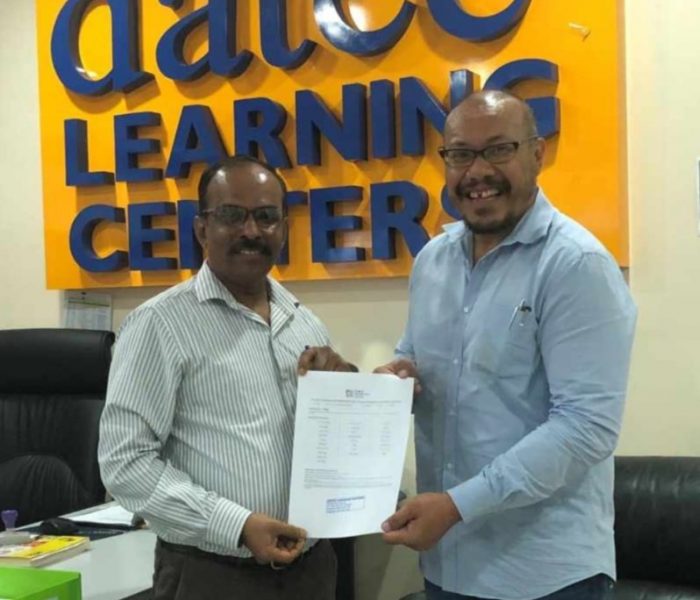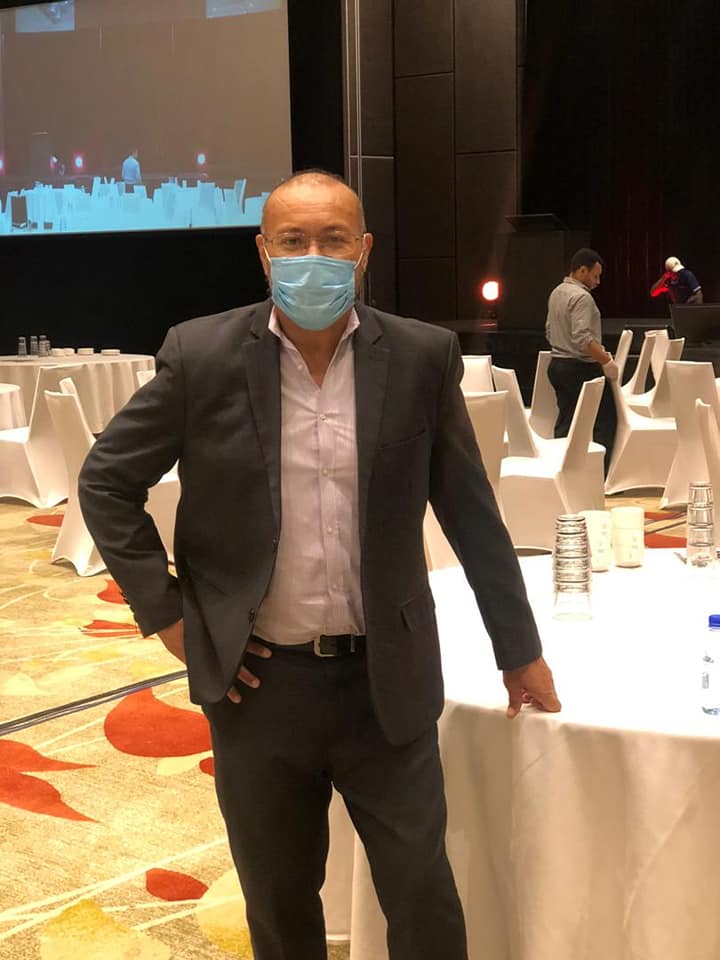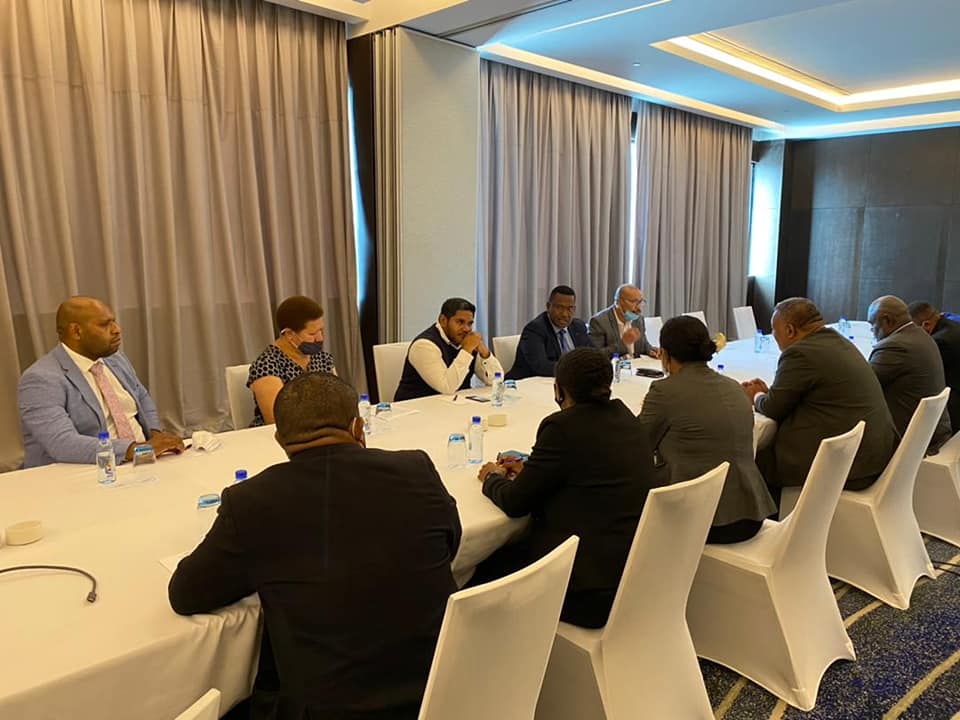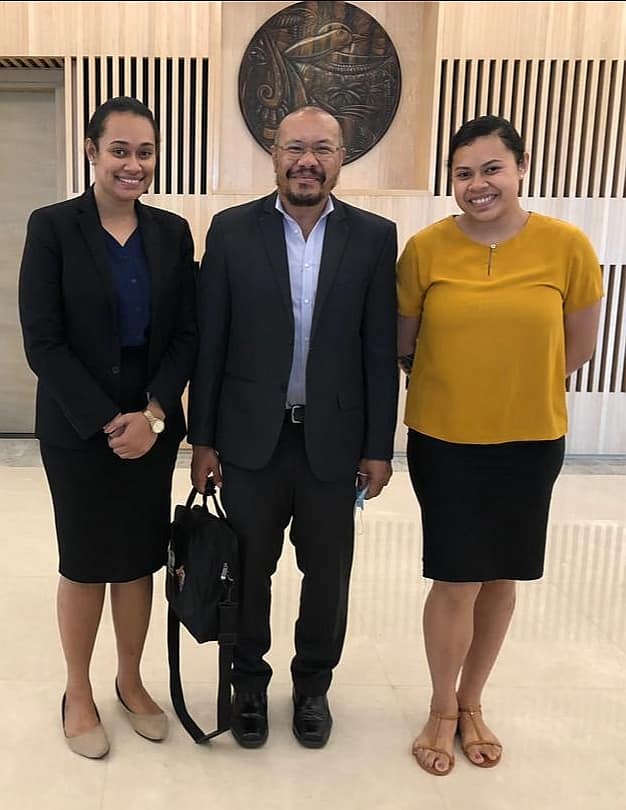Lahui Ako
Lahui Ako is an author and a blogger. He fully supports the promotion of healthy living, while preserving the legacy of all the Nameless Warriors of the PIB and the PIR who have fought to defend our freedom, LEST WE FORGET!
Planning your exit strategy: La Global Consulting Services Ltd and its project management endeavors

In January, 2020, I started thinking seriously about my future in the PNG Public Service, and whether or not it was time to move on in light of the many conflicting variables at play then, first and foremost, my marketability. After 27-years and 10 months in the public service, I was now at the cross-road of my career. The following questions were uppermost in my mind: Should I exit now, while I was still in my early 50s so as to be productive and competitive in the private sector? Or should I hang on, and hope for another promotion to a higher level than what I was on then? I decided on the first option: to move out, and graze the fields beyond the horizons.
But moving out is easier said than done. There is a lot of variables you need to take into serious account before you take that step. You must answer the following questions:
- What do you want to do outside of the public service?
- What are you bringing with you to the private sector?
- Is it competitive enough to be in demand out there?
- If not, do you need to go upgrade and upskill yourself before you take that step outside of your comfort zone?
Simply, in a nutshell, can you compete in this new surrounding?

One of my trainers and mentors in Project Management, a PMP holder told me, “Lahui, the degrees we attained from universities and colleges decades ago are now only good for memories. They cannot help us advance in the real world if you are thinking of using them to apply for jobs up field.”
How true. So, after much soul searching, I sat down and started planning my exit. The first part of my plan in this exit strategy was training, or rather, upskilling my current level of know-how to a more adaptable level in the future state.
In April, 2020, I enrolled myself in DATEC’s Diploma in Project Management program. This two-semester program was/is run during weekends, leaving the weekdays free for work. DATEC (PNG) Ltd is a member of the Project Management Institute (PMI) group of certified trainers. It provides courses under the PMI banner, in addition to other certification programs in the project management stream, such as Prince2 under AXELOS, SCRUM, AGILE and other related programs. In November, 2020, I successfully attained my Diploma in Project Management from DATEC after the final exam. Having attained this prerequisite, I commenced immediately on executing the next plan in my Exit Strategy; that of acquiring a PMI certification: in this case, the Certified Associate in Project Management (CAPM) as a key for my entry into the private sector.
Wasn’t a Diploma in Project Management enough for my purposes? Why a CAPM?
Our Sunday class included 18 students. I think there was a similar number on Saturday as well. We all successfully attained the Diploma in Project Management. However, I was the only one in the class aged over 50. So, if DATEC enrolled and graduated 36 students in 2020 all with a Diploma in Project Management with half of them from the private sector, that didn’t give me the edge I required for the next stage of my plan.
To compete outside the public service, I had to have that edge; an edge that will show my new peers in the private sector, that even if I lacked the years of experience befitting them in the corporate world, I would still have the necessary tool to play with them on a more or less equal footing; and that edge didn’t include a Diploma in Project Management qualification. No. I needed something higher with an international flavor.
So, entered the PMI Certified Associate in Project Management, or CAPM, as it is known in the PMI jargon.
From October 2020 until Thursday, 28 January, 2021, I knuckled down and concentrated my whole being on getting to know the PMBOK6. The PMI’s PMBOK6, or Project Management Book of Knowledge 6th Edition, is the 800 or so paged document a CAPM aspirant needs to memorize if he or she is intending to take the plunge into the world of project management.
On Thursday, 28 January, 2021, I sat for my CAPM examination at DATEC, and 3-hours and 150 multiple-choice questions later, I walked out beaming, having qualified to have the post-nominals CAPM listed after my name. While the CAPM is only a precursor to the highly valued Project Management Professional (PMP), or Program (PgMP) or Portfolio (PfMP) Management Professional certifications, it still goes a long way in “keeping the peace” when the question of credibility comes into play in the PNG private sector.
But why project management?
I thought I had already served out my apprenticeship in strategic management. Straight after my return from my diplomatic posting in China in December, 2007, I decided to enroll myself in the UPNG’s pilot Master in Strategic Management (MSM) program in 2009. In 2011, I successfully attained my Masters degree. The following year, and for six years after that, I was to put into practice this knowledge by planning Papua New Guinea’s biggest ever capacity building exercise since WW2, and foreign policy exercise since 1975; APEC PNG 2018.
With this MSM qualification, I was appointed by Cabinet to head the newly established PNG APEC Secretariat in August 2012. But this being so, as part of my MSM thesis, I had also written the 1077-page Operations Plan for APEC 2018 back in December, 2011 which was to become the foundation upon which the APEC Coordinating Authority (ACA), and the Joint Security Taskforce (JSTF) would build their logistics and security platforms upon. Most of all, I also had the humble honor of heading the “brain-thrust” into drafting Papua New Guinea’s policy configuration for our host year. This resulted in 139 documents which PNG used to implement its 2018 chairmanship responsibilities.
But this was strategic management at its best. Why the new-found interest in Project management?
In 2019, as I reminisced about the activities, we did in 2018, I realized that while the high level planning had been spot-on, I had missed out on the low-level planning, in particular, the swarm of activities that made up the OPPLAN2018. I began to ask myself what made these activities become activities, and how were they implemented? What were their actual international definitions?
The OPPLAN2018 covered the high-level strategic intent of our APEC 2018 host, its vision, mission, objectives, and strategies, and it outlined the activities required to achieve the overall strategic intent. The question that still rang in my ears was: How were these activities operationalized? I wanted to know or in fact, learn how this was done. Because we did implement the activities we had scheduled and planned; from their start date, to their completion dates.
The answer: Project management.
The PNG APEC Secretariat, and the Committee on APEC Policy Issues (CAPI) which is made up of all the government departments and agencies responsible for the policy configuration of APEC PNG 2018, had unknowingly employed Project management tools and techniques to execute these activities to their successful completion. These activities were projects. For instance, of the 139 documents PNG brought to the APEC table as its policy priorities and agendas, 130 were activities, (or rather projects) – all with start dates and finish dates, which the 21-member APEC economies, with PNG as 2018 Chair, had to operationalize and complete.
This intrigued me. “I must know and understand the proper tools and techniques used to complete these activities”, I told myself. So, I started looking far and wide for answers. As I did so, my eyes alighted on DATEC’s training promos, and one promo in particular greatly interested me. So, I registered myself at its Project Management program, and by the end of that ride, I had attained myself an international certification in the process, and understood the overall configuration of my OPPLAN2018.
PMBOK6 defines a Project “as a temporary endeavor undertaken to create a unique product, service, or result.” It is undertaken to fulfill objectives by producing deliverables. An Objective is defined as a “outcome towards which work is to be directed, a strategic position to be attained, a purpose to be achieved, a result to be obtained, a product to be produced, or a service to be performed”.
The temporary nature of the project indicates that a project has a definite beginning and end. Temporary doesn’t necessary mean that a project has a short duration. The end of the project is reached when one or more of the following is achieved:
- The project’s objectives have been achieved;
- The objectives will not, or cannot be met;
- Funding is exhausted or no longer available for allocation to the project;
- The need for the project no longer exists;
- Human or physical resources are no longer available; or,
- The project is terminated for legal cause or convenience.
Projects drive change in an organization. It moves an organization from the current state to the future state in order to achieve a specific objective.
Projects also enable business value creation. PMI defines business value as “the net quantifiable benefit derived from a business endeavor”. The benefit may be tangible, intangible, or both. In business analysis, business value is considered the return, in the form of elements such as time, money, goods, or intangibles in return for something exchanged, such as goodwill, brand recognition, public benefit, trademarks, strategic alignment, and, reputation.

Organizational leaders initiate projects in response to factors acting upon their organizations. There are four (4) fundamental categories for these factors, which illustrate the context of a project, such as:
- Meet regulatory, legal, or social requirements;
- Satisfy stakeholder request or needs;
- Implement or change business or technological strategies; and,
- Create, improve, or fix products, processes, or services.
These factors influence an organizations ongoing operations and business strategies. Leaders respond to these factors in order to keep the organization viable. Projects provide the means for organizations to successfully make the changes necessary to deal with these factors. These factors ultimately should link to the strategic objectives of the organization, and business value of each project.
Historically, project management is not new. It has been in use for thousands of years. Examples of project outcomes include: the Pyramids of Giza, Olympic games, Great wall of China, the Taj Mahal, Panama Canal, Polio Vaccine, commercial software applications, etc. The outcomes of the projects were the result of leaders and managers applying project management practices, principles, processes, tools, and techniques to their work. The managers of these projects used a set of key skills and applied knowledge to satisfy their customers and other people involved in, and affected by the project.
In “The Story of managing projects” by Carayannis, Kwak, and Anbari (Editors) (2003), Dr Young Hoon Kwak (PhD) writes that while project management has been practiced for thousands of years since the Egyptian era, it has only been about half a century ago that organizations started applying systematic project management tools and techniques to complex projects. In the 1950s, the US Navy employed modern project management methodologies in their Polaris project. During the 1960s and 1970s, the US Department of Defence, NASA, and large engineering and construction companies utilized project management principles and tools to manage large budget, schedule-driven projects. In the 1980s, manufacturing and software development sectors started to adopt and implement sophisticated project management practices. By the 1990s, project management theories, tools, and techniques were widely received by different industries and organizations.
Snyder and Kline (1987) noted that the modern project management era started in 1958 with the development of CPM/PERT. Morris (1987) argues that the origin of project management comes from the chemical industry just prior to World War II. He further notes that the project management is clearly defined as a separate discipline in the Atlas missile program, especially in the Polaris project. Some literatures pointed the origin of project management to Henri Fayol’s (1916) five functions of a manager: To Plan; Organize; Coordinate, Control; and, Direct or Command. Kerzner (1998) observes that project management is an “outgrowth of systems management.”
In light of all these models and/or systems of thoughts in project management, the PMI’s PMBOK6 defines the Project life cycle (the series of phases that a project passes through from its start to its completion) to include – Starting the project; organizing the project; Carrying out the work; and, Ending the project. These are then grouped into the following five (5) process groups:
- Initiating processes;
- Planning process;
- Executing processes;
- Monitoring and Controlling processes; and,
- Closing processes.
These process groups are then cascaded into the ten (10) project management Knowledge Areas, which then make up the heart of the project management matter.
While I racked my brains every weekend from April to November, 2020 in order to master this new found knowledge, I also commenced marketing myself to potential companies and organizations who I thought would be in need of my experiences and skills, while I trained myself in anticipation, on the sidelines.
On 13 October, 2020, in taking account of the 3-month-notice clause in my Public Service Contract, I formally tendered in my resignation. There was no turning back now; the die had been cast. The third element of my Exit Strategy was in motion. I continued to knuckle down with the PMBOK6.
By December, 2020, I was in the final stages of my negotiations for a contract with the Business Council of PNG. By the time I obtained by CAPM certification in January, 2021, I had already secured a one-year retainer contract with the BCPNG.
I commenced as a member of the PNG private sector on Tuesday, 19 January, 2021, 24-hours after walking-off my comfortably secured public service job.

Today, my friends in government must think that I was handed my current contract on a silver platter. I wish that was, indeed, the case. Unfortunately, it wasn’t. “It took me 24 months to plan and execute my Exit Strategy. In the final 12 months of the Exit Strategy ten of them were taken up with training to upskill and upgrade my arsenal for this transition. The CAPM next to my surname is a testimony of that transition”.
So, plan, plan, plan, and then, train, train, train to enable that smooth transition into the future state of your vision. Nothing is given on a silver platter.
Thank you for taking the time to read my testimony.
1 comment
Very well presented and truly insightful. Thanks so much for sharing.